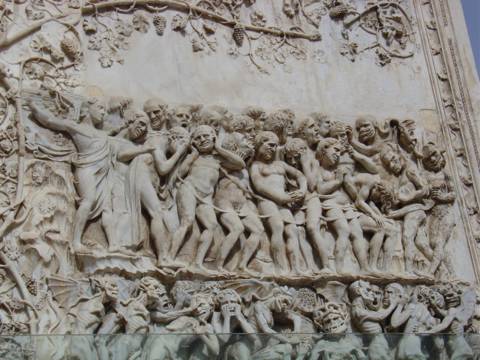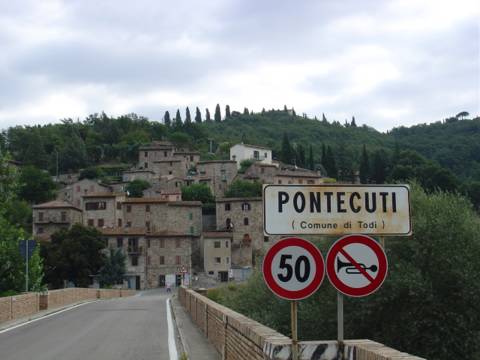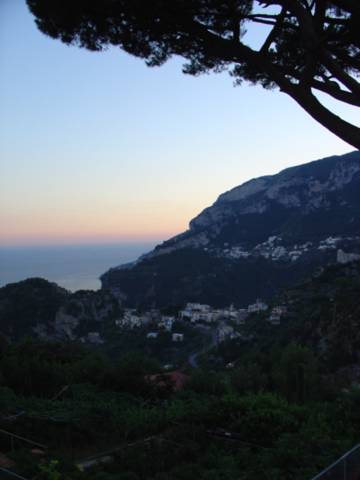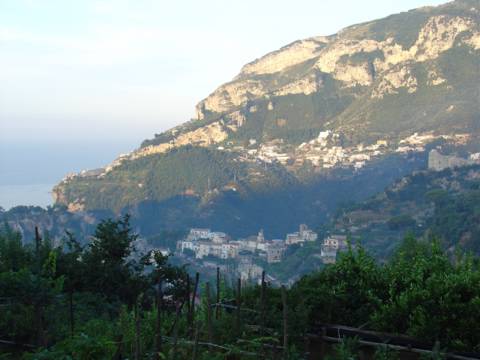Friday, August 20, 2004
A day in Umbrian hill towns
Thursday, continued
Climbing up the Campanile of San Fortunato in Todi is one of those things that you feel you must do because you’re there and it’s there and it only costs 1.5 Euro. The view? Sure, it’s fantastic, but the views here are magnificent from every vantage point in this place. Having made the climb, I feel compelled to post a photo.
Climbing up the Campanile of San Fortunato in Todi is one of those things that you feel you must do because you’re there and it’s there and it only costs 1.5 Euro. The view? Sure, it’s fantastic, but the views here are magnificent from every vantage point in this place. Having made the climb, I feel compelled to post a photo.
-->I came to appreciate how few tourists there are in Todi when I went elsewhere in the afternoon*. In Todi, you hear nothing but Italian on the streets and in the restaurants. In the morning, the women and men congregate for their shot of espresso or cappuccino at the cafés and you can tell they are regulars – they get their drinks and pastries without having to put in a request. The shop-keepers speak only Italian. And they do you favors – in the way that people do favors in small towns that haven’t yet been worn out by the incessant demands made by visitors (like me!). The person in my favorite breakfast pastry place gave me some of their Illy coffee because I could not find any in town and I have a thing for it. And as I leave, they wont just say politely “buon giorno,” they’ll say “buon giorno, arivederci, ciao!” And (grazie!!) they’ll let me use their phone so that I can make my local call and collect to the Internet.
* Orvieto has perhaps the finest XV c. cathedral in Italy and so it deserved an afternoon visit. It also has perhaps the largest number of shops per square foot in any of the hill towns. And, not a small number of tourists. The most interesting were the religious groups – nuns staring at the ceiling frescoes of the chapel with such reverence that it almost made me jealous. To me, the figures depicted in stone and on the walls were a reminder of how grotesque and graphic the Biblical stories became for artists of previous centuries. Consider the scene from a detail of the church pillar (below). Apparently it served as a warning that hell, brimming with snakes and reptiles, was ready and waiting for the immoral townspeople.
* Orvieto has perhaps the finest XV c. cathedral in Italy and so it deserved an afternoon visit. It also has perhaps the largest number of shops per square foot in any of the hill towns. And, not a small number of tourists. The most interesting were the religious groups – nuns staring at the ceiling frescoes of the chapel with such reverence that it almost made me jealous. To me, the figures depicted in stone and on the walls were a reminder of how grotesque and graphic the Biblical stories became for artists of previous centuries. Consider the scene from a detail of the church pillar (below). Apparently it served as a warning that hell, brimming with snakes and reptiles, was ready and waiting for the immoral townspeople.
An evening at La Mulinella
At 8:30 the sun is gone but it’s not yet dark. La Mulinella is outside of town, on a side road, hard to find. Tables are scattered on a graveled surface, underneath a huge shade-giving tree. A large number are set for large parties of ten or twelve. These are just starting to be filled with several generations of diners. The youngest are around three or four, the oldest – in the late seventies perhaps.
No one orders, but dishes with food start coming right away. Pitchers of wine are placed on the table, plates of crostini are set out at both ends. Eventually the pasta dishes arrive, then plates of grilled meats, roasted vegetables, and so it continues.
When I get ready to leave two, three hours later, I notice that the others are all still there. The younger children have moved to the laps of grandfathers, the somewhat older boys are leaning on the shoulders of their fathers, held there in a loose embrace, some restless little ones have wondered off to other parts of the garden. Bowls of tiramisu are at the table. It’s dark now, but no one is in a hurry.
La Mulinella is irresistible*. I ate there twice and each time the menu was the same but the food came out just a bit different, depending on what was available, what the kitchen wanted to put out. I took just one photo – of a first course: home-made gnocchi with an aromatic mushroom sauce. I can guarantee that it will be one of the first dishes I’ll try to recreate back home, though I know it’s hopeless. La Mulinella gets it exactly right for a million reasons, only some of them having anything to do with the preparation of this dish.
At 8:30 the sun is gone but it’s not yet dark. La Mulinella is outside of town, on a side road, hard to find. Tables are scattered on a graveled surface, underneath a huge shade-giving tree. A large number are set for large parties of ten or twelve. These are just starting to be filled with several generations of diners. The youngest are around three or four, the oldest – in the late seventies perhaps.
No one orders, but dishes with food start coming right away. Pitchers of wine are placed on the table, plates of crostini are set out at both ends. Eventually the pasta dishes arrive, then plates of grilled meats, roasted vegetables, and so it continues.
When I get ready to leave two, three hours later, I notice that the others are all still there. The younger children have moved to the laps of grandfathers, the somewhat older boys are leaning on the shoulders of their fathers, held there in a loose embrace, some restless little ones have wondered off to other parts of the garden. Bowls of tiramisu are at the table. It’s dark now, but no one is in a hurry.
La Mulinella is irresistible*. I ate there twice and each time the menu was the same but the food came out just a bit different, depending on what was available, what the kitchen wanted to put out. I took just one photo – of a first course: home-made gnocchi with an aromatic mushroom sauce. I can guarantee that it will be one of the first dishes I’ll try to recreate back home, though I know it’s hopeless. La Mulinella gets it exactly right for a million reasons, only some of them having anything to do with the preparation of this dish.
* One of the charming things that the restaurant does is that it rounds DOWN the total on the check. So that if a (four-course, with plenty of house wine and numerous bottle of fizzy water) meal for four rang up at 104 Euro (which it did), they will cross out the total and write 100 E on the bill. It is just one of the endearing little habits that the waiters engage in to make your evening there pleasant.
Thursday, August 19, 2004
Far’ niente (the art of doing nothing)
Wednesday
If I had exactly 24 hours in Ravello, how would I spend it?
Doing nothing. It is a town that invites exactly that. In the past, I tried hiking but it is treacherous. I’ve looked at the “sights” but they are minimal. Even sleeping a regular cycle is a waste of time because it cuts into your “doing nothing in the evening” time and your doing not much in the morning” hours.
True, eating a meal figures into this mentality. In fact, if truth be told, much of the impetus for this little sojourn could be found in the recollection of a past perfect dinner here (at the family-run Villa Maria, where one can also stay overnight). It was simple: a pasta, a grilled fish and a dessert. But each component, infused with herbs and lemons from the garden, is near-perfect. And the setting – yes, on a terrace, suspended over the northern shore of the coastline.
If I had exactly 24 hours in Ravello, how would I spend it?
Doing nothing. It is a town that invites exactly that. In the past, I tried hiking but it is treacherous. I’ve looked at the “sights” but they are minimal. Even sleeping a regular cycle is a waste of time because it cuts into your “doing nothing in the evening” time and your doing not much in the morning” hours.
True, eating a meal figures into this mentality. In fact, if truth be told, much of the impetus for this little sojourn could be found in the recollection of a past perfect dinner here (at the family-run Villa Maria, where one can also stay overnight). It was simple: a pasta, a grilled fish and a dessert. But each component, infused with herbs and lemons from the garden, is near-perfect. And the setting – yes, on a terrace, suspended over the northern shore of the coastline.
After the meal, it is time to move yourself to the main square, for several late hours of “doing nothing” there. Children chase each other, young adults flirt outrageously, older types stand or sit in groups talking with the animation you’d normally have only if you’d been locked in isolation for the past two months. It is a glorious way to spend the late hours of the evening.
Breakfast is, of course, leisurely. Same terrace, with views, this time, over the bay in the pink morning light. Lemon marmalade is made from the monster lemons grown in this region. They have a special taste – tart and sweet at the same time.
Breakfast is, of course, leisurely. Same terrace, with views, this time, over the bay in the pink morning light. Lemon marmalade is made from the monster lemons grown in this region. They have a special taste – tart and sweet at the same time.
Subscribe to:
Posts (Atom)















